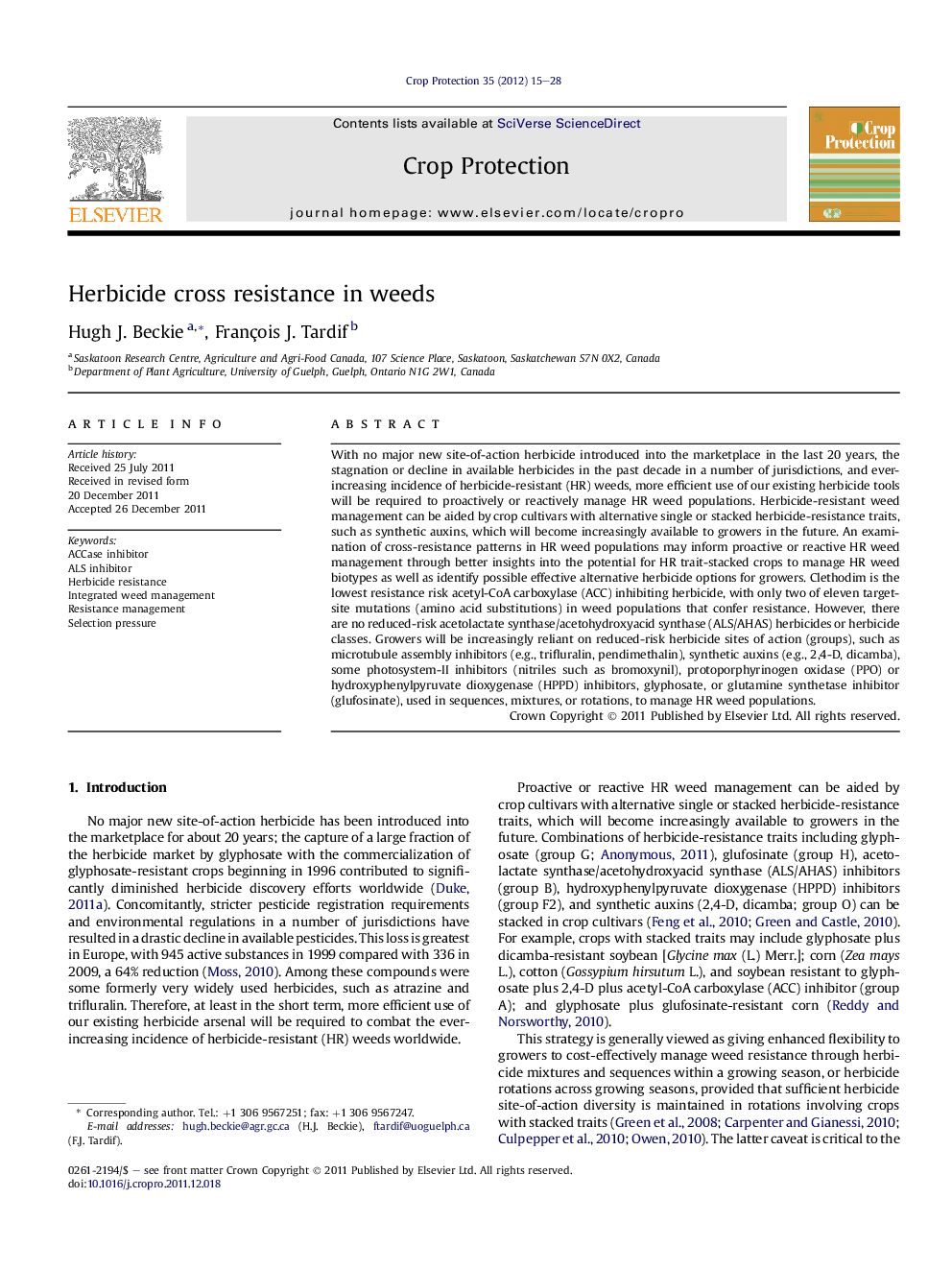| کد مقاله | کد نشریه | سال انتشار | مقاله انگلیسی | نسخه تمام متن |
|---|---|---|---|---|
| 4506512 | 1624352 | 2012 | 14 صفحه PDF | دانلود رایگان |

With no major new site-of-action herbicide introduced into the marketplace in the last 20 years, the stagnation or decline in available herbicides in the past decade in a number of jurisdictions, and ever-increasing incidence of herbicide-resistant (HR) weeds, more efficient use of our existing herbicide tools will be required to proactively or reactively manage HR weed populations. Herbicide-resistant weed management can be aided by crop cultivars with alternative single or stacked herbicide-resistance traits, such as synthetic auxins, which will become increasingly available to growers in the future. An examination of cross-resistance patterns in HR weed populations may inform proactive or reactive HR weed management through better insights into the potential for HR trait-stacked crops to manage HR weed biotypes as well as identify possible effective alternative herbicide options for growers. Clethodim is the lowest resistance risk acetyl-CoA carboxylase (ACC) inhibiting herbicide, with only two of eleven target-site mutations (amino acid substitutions) in weed populations that confer resistance. However, there are no reduced-risk acetolactate synthase/acetohydroxyacid synthase (ALS/AHAS) herbicides or herbicide classes. Growers will be increasingly reliant on reduced-risk herbicide sites of action (groups), such as microtubule assembly inhibitors (e.g., trifluralin, pendimethalin), synthetic auxins (e.g., 2,4-D, dicamba), some photosystem-II inhibitors (nitriles such as bromoxynil), protoporphyrinogen oxidase (PPO) or hydroxyphenylpyruvate dioxygenase (HPPD) inhibitors, glyphosate, or glutamine synthetase inhibitor (glufosinate), used in sequences, mixtures, or rotations, to manage HR weed populations.
► Trends in cross-resistance patterns in herbicide-resistant weeds can aid management.
► Resistance mechanisms and degree of outcrossing in weeds dictate cross-resistance patterns.
► Predictability of cross-resistance patterns varies by herbicidal site of action.
► Review of cross resistance in weeds will inform stewardship of crops with stacked traits.
Journal: Crop Protection - Volume 35, May 2012, Pages 15–28